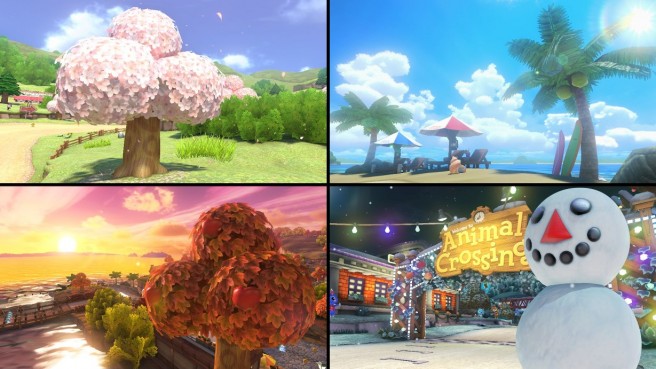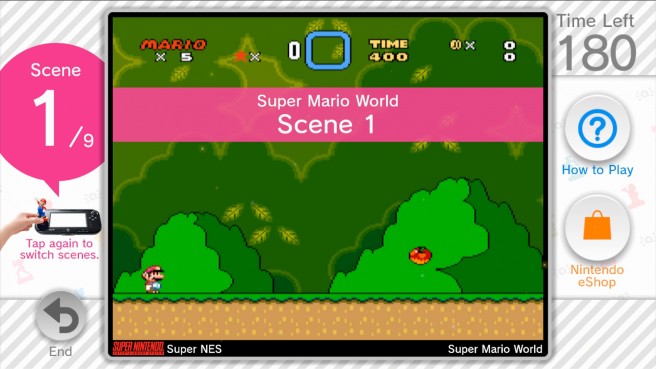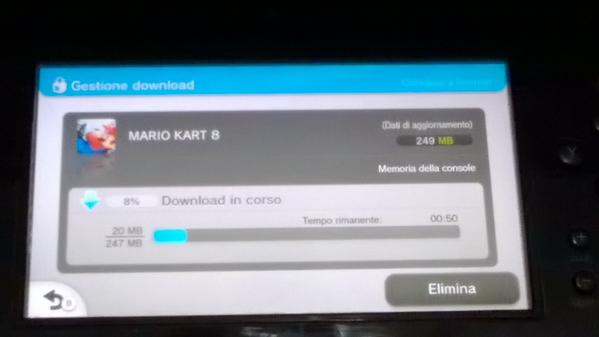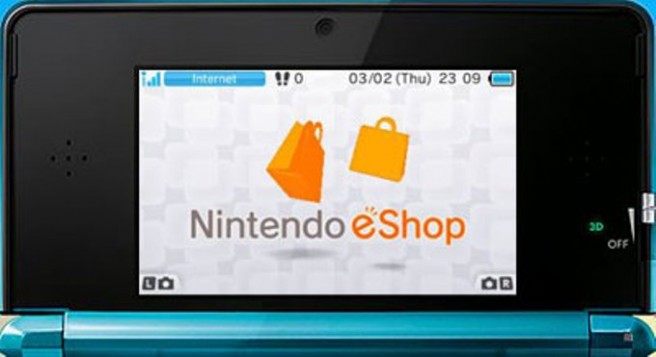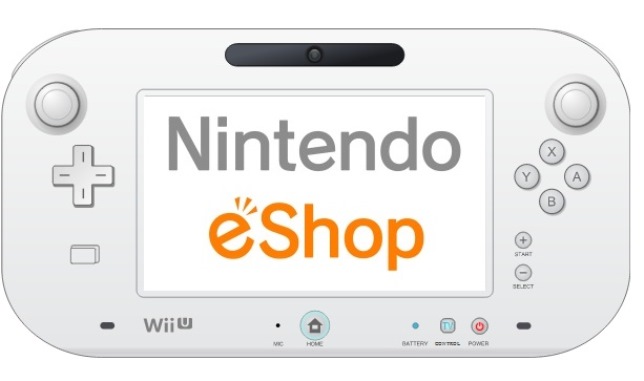Plenty of Mario Kart 8 DLC Pack 2 videos
Posted on 10 years ago by Brian(@NE_Brian) in Videos, Wii U | 1 Comment
Now that the new Mario Kart 8 DLC has arrived, fans are starting to record a whole bunch of footage from the latest tracks. You can find a roundup of videos below.
More: DLC, Mario Kart 8
Full lineup of amiibo Tap: Nintendo’s Greatest Bits games
Posted on 10 years ago by Brian(@NE_Brian) in News, Wii U eShop | 0 comments
amiibo Tap: Nintendo’s Greatest Bits has now launched in Japan, and the full lineup of supported games has been revealed. There are a total of 22 NES titles and 8 SNES games to try out by using various figures.
Here’s the complete lineup:
NES
Super Mario Bros.
Super Mario Bros. 2 (USA version)
Super Mario Bros. 3
Super Mario Bros.: The Lost Levels
Kirby’s Adventure
The Legend of Zelda
Zelda II: The Adventure of Link
Metroid
Yoshi
Dr. Mario
Punchout!!
Mach Rider
Excitebike
Ice Climbers
Kid Icarus
Donkey Kong
Donkey Kong Jr.
Balloon Fight
Wrecking Crew
Pinball
Clu Clu Land
Wario’s Woods
Super Nintendo
Super Mario World
Super Mario Kart
F-Zero
Kirby’s Dreamland 3
Kirby’s Super Star
Kirby’s Dream Course
Super Metroid
The Legend of Zelda: A Link to the Past
Remember: when scanning an amiibo, you’re granted access to a random game. So a Mario amiibo won’t necessarily unlock a Mario title!
Video: All four seasons in Animal Crossing DLC for Mario Kart 8
Posted on 10 years ago by Kirara Koneko(@KiraraKoneko) in Videos, Wii U | 1 Comment
More: Animal Crossing: New Leaf, DLC, Mario Kart 8, seasons
Video: New amiibo racing suits for Mario Kart 8
Posted on 10 years ago by Kirara Koneko(@KiraraKoneko) in Videos, Wii U | 0 comments
More: Amiibo, DLC, Mario Kart 8
Images of the Limited Edition briefcase for The Great Ace Attorney
Posted on 10 years ago by Kirara Koneko(@KiraraKoneko) in 3DS, Images | 1 Comment
Mario Kart 8 DLC and update 4.0 now live
Posted on 10 years ago by Dennis Gagliardotto(@LyonHart_) in News, Wii U | 7 Comments
The long awaited 2nd batch of Mario Kart 8 DLC along with its new update which includes the new 200cc mode is finally here! The update itself is approximately 250MB, while the DLC is 970MB. Yes, close to 1GB.
Here’s what you’ll find in the new update:
NOTE: Update is required to download the second DLC pack
– 9 new Mii suits added: Wario, Pac-Man, Olimar, Bowser, Sonic, Toad, Villager, Rosalina and Mega Man
– 200cc class added
– Added sparks effect when braking in 200cc class
– Added braking on the Wii Remote by pressing the B, 1 and 2 buttons at the same time
– Added ability to add CPU players for online custom rules (only human players will be counted for scoring)
– Press Minus to display the map on the TV screen with the Pro Controller, Classic Controller, Wii Remote + Nunchuk
– On the Animal Crossing circuit, seasons are not random when you play Time Attack (you only have Summer)
– 10 new stamps for Miiverse
– Various bug fixes
Once you boot up the game, you’ll be prompted to download the new update. Simply wait, and once it’s done you can go have fun!
More: DLC, Mario Kart 8
HullBreach Studios shares updates on Defense Dome, SDK Paint, Tomeling: Darkness Falls, and SDK Spriter
Posted on 10 years ago by Brian(@NE_Brian) in News, Wii U eShop | 0 comments
HullBreach Studios passed along new information about its upcoming plans, including new games and previously-released titles. The latest news covers Defense Dome, SDK Paint, Tomeling: Darkness Falls and SDK Spriter. Read on below to find out what’s new with each of these releases.
Defense Dome New Trailer
(Powered By Nintendo Framework)DEFENSE DOME:
Development just finished on this title, and it was sent to Nintendo for review today. We will announce when the release date is set. For those new to this game, it is a gyroscope-controlled arcade-style shooter, where you launch countermeasures to shoot down incoming missiles. The Wii U GamePad acts as a zoomable scope. The initial launch will come with 2 levels: Mountains (tutorial mode) and Hurricane (blitz mode). Future levels will be in the form of inexpensive add-on content. No 2 levels will be alike in this: some will be first-person perspective; others will be heavy on power-ups. Some levels will be based on ideas posted to Miiverse, so the gamers will help design the future levels! Defense Dome is fully translated into English, French, and Spanish.
SDK PAINT
A demo for SDK Paint is pending review with Nintendo right now. This demo previews just Painting mode, and it provides screenshots for other modes. The next update to SDK Paint is in development. It will contain direct Miiverse posting, more brushes, bug fixes, and a redesigned interface. Additionally, there will be add-on Galleries and add-on shaders (like fisheye, motion blur, ripple, etc.). The plan is to also build online sharing into this version, linking artwork with SDKPaint.com and some upcoming Wii U titles.
TOMELING: DARKNESS FALLS:
This RPG stars an ancient tome that has come to life and his human companions, as they journey to save the world from a demonic incursion. The gameplay will be reminiscent of some of the classic games of the 1990s. We hope to have a video teaser ready in the next few weeks. The target release is in the fall.
SDK SPRITER:
This end-to-end 2D game level design studio will allow gamers to draw animated sprites, draw tilesets, build tilemaps, and combine everything into playable levels. The levels will come in the forms of parallax sidescroller, overhead platformer, and “Mode 7”. Artists will be able to share content over Miiverse. The target release is in the summer.
Source: HullBreach Studios PR
3DS eShop charts (4/22/15)
Posted on 10 years ago by Brian(@NE_Brian) in 3DS eShop, News | 0 comments
This week’s 3DS eShop charts are as follows:
Software
1. Mario Kart 7
2. Xenoblade Chronicles 3D
3. Super Mario Bros. 3
4. Animal Crossing: New Leaf
5. BoxBoy!
6. Mighty Gunvolt
7. Super Mario Bros.: The Lost Levels
8. Zelda: Oracle of Ages
9. Zelda: Oracle of Seasons
10. Yoshi’s New Island
11. Zelda: Link’s Awakening DX
12. Kirby Triple Deluxe
13. New Super Mario Bros. 2
14. Super Mario Bros. Deluxe
15. Pushmo
16. Mario Golf: World Tour
17. Tomodachi Life
18. Super Smash Bros. for 3Ds
19. The Legend of Zelda
20. Shovel Knight
Videos
1. Pokemon Rumble World Trailer
2. Super Smash Bros. for Wii U/3DS Mewtwo Strikes Back
3. Super Smash Bros. for Wii U/3DS Lucas Comes out of Nowhere
4. Xenoblade Chronicles 3D Launch Trailer
5. Mario Kart 7
6. LEGO Dimensions Announce Video
7. Xenoblade Chronicles 3D Let the Shackles be Released! Trailer
8. Super Smash Bros. Mii Fighters Suit Up for wave One
9. DOOORS Trailer
10. Nintendo Direct: 4/1/15
11. Attack on Titan: Humanity in Chains Episode 1
12. Attack on Titan: Humanity in Chains Teaser Trailer
13. Pokemon Shuffle Tips & Tricks Trailer
14. Monster Hunter 4 Ultimate April DLC Pack Trailer
15. LEGO Dimensions Announce Video – Sneak Peak
16. Super Mario 64 Trailer
17. Puzzle & Dragons: Super Mario Bros. Edition Trailer
18. Mighty Gunvolt Campaign Trailer
19. New 3DS XL Trailer
20. Fossil Fighters: Frontier Launch Trailer
Source: 3DS eShop
More: charts
Video additions to the eShop (4/22/15)
Posted on 10 years ago by Brian(@NE_Brian) in 3DS eShop, News, Wii U eShop | 0 comments
This week’s video additions to the Wii U/3DS eShops are as follows:
Wii U
Splatoon Start Inking Trailer
Mario Kart 8 DLC Pack 2 – Baby Park Course Trailer
Mario Kart 8 DLC Pack 2 – Big Blue Course Trailer
Mario Kart 8 DLC Pack 2 – Cheese Land Course Trailer
Mario Kart 8 DLC Pack 2 – Neo Bowser City Course Trailer
Mario Kart 8 DLC Pack 2 – Ribbon Road Course Trailer
Mario Kart 8 DLC Pack 2 – Super Bell Subway Course Trailer
Mario Kart 8 DLC Pack 2 – Wild Woods Course Trailer
Music of Mario Kart 8 – Big Blue Trailer
Music of Mario Kart 8 – Super Bell Subway Trailer
Music of Mario Kart 8 – Wild Woods Trailer
Donkey Kong 64 Trailer
3D Fantasy Zone II W Trailer
Runbow Guest Character Reveal Trailer
3DS
Splatoon Start Inking Trailer
Mario Kart 8 DLC Pack 2 – Baby Park Course Trailer
Mario Kart 8 DLC Pack 2 – Big Blue Course Trailer
Mario Kart 8 DLC Pack 2 – Cheese Land Course Trailer
Mario Kart 8 DLC Pack 2 – Neo Bowser City Course Trailer
Mario Kart 8 DLC Pack 2 – Ribbon Road Course Trailer
Mario Kart 8 DLC Pack 2 – Super Bell Subway Course Trailer
Mario Kart 8 DLC Pack 2 – Wild Woods Course Trailer
Music of Mario Kart 8 – Big Blue Trailer
Music of Mario Kart 8 – Super Bell Subway Trailer
Music of Mario Kart 8 – Wild Woods Trailer
3D Fantasy Zone II W Trailer
Runbow Guest Character Reveal Trailer
Source: Wii U/3DS eShops
More: video additions
Wii U eShop charts (4/22/15)
Posted on 10 years ago by Brian(@NE_Brian) in News, Wii U eShop | 0 comments
This week’s Wii U eShop charts are as follows:
Software
1. Donkey Kong 64
2. Super Mario 64
3. Donkey Kong Country: Tropical Freeze
4. Mario & Luigi: Superstar Saga
5. Captain Toad: Treasure Tracker
6. EarthBound
7. Metroid Fusion
8. Yoshi’s Island: Super Mario Advance 3
9. Super Mario World
10. Golden Sun
11. Super Mario Galaxy 2
12. Mario Party 10
13. Advance Wars
14. Affordable Space Adventures
15. The Legend of Zelda
16. Super Metroid
17. Super Mario Bros. 3
18. Super Mario Kart
19. Pikmin 3
20. Donkey Kong Country
Videos
1. Super Smash Bros. for Wii U/3DS Mewtwo Strikes Back
2. Super Mario 64 Trailer
3. Super Smash Bros. for Wii U/3DS Lucas Comes out of Nowhere
4. Play Nintendo Introduction Video
5. Donkey Kong 64 Trailer
6. LEGO Dimensions Announce Video
7. Mario Kart 8 New amiibo Racing Suits Trailer
8. Mario Kart 8 200cc is Here Trailer
9. Super Smash Bros. Mii Fighters Suit Up for Wave One
10. Yoshi’s Woolly World E3 2014 Trailer
11. Mario Party 10 Launch Trailer
12. LEGO Dimensions Announce Video – Sneak Peak
13. Nintendo Direct: 4/10/15
14. Nintendo Minute – Mario Party 10 with Lamar Wilson
15. Mario Kart 8 Animal Crossing Course Trailer
16. Upcoming Fire Emblem Teaser Trailer
17. Mario Party 10 Trailer
18. Great Games to Buy with eShop Cards
19. Mario Kart 8 DLC Pack 2 Preview
20. Splatoon – Single Player Campaign Trailer
Source: Wii U eShop
